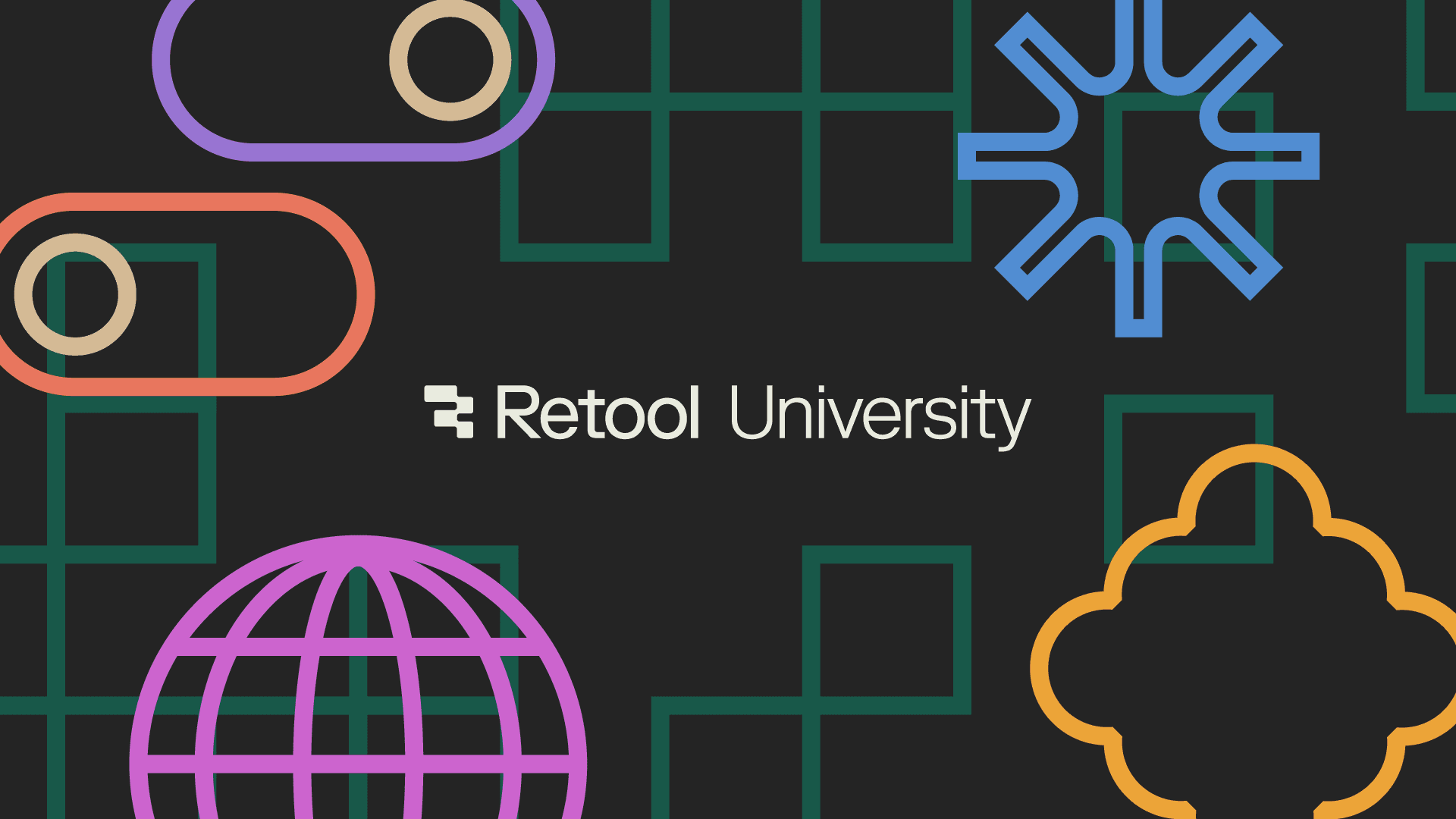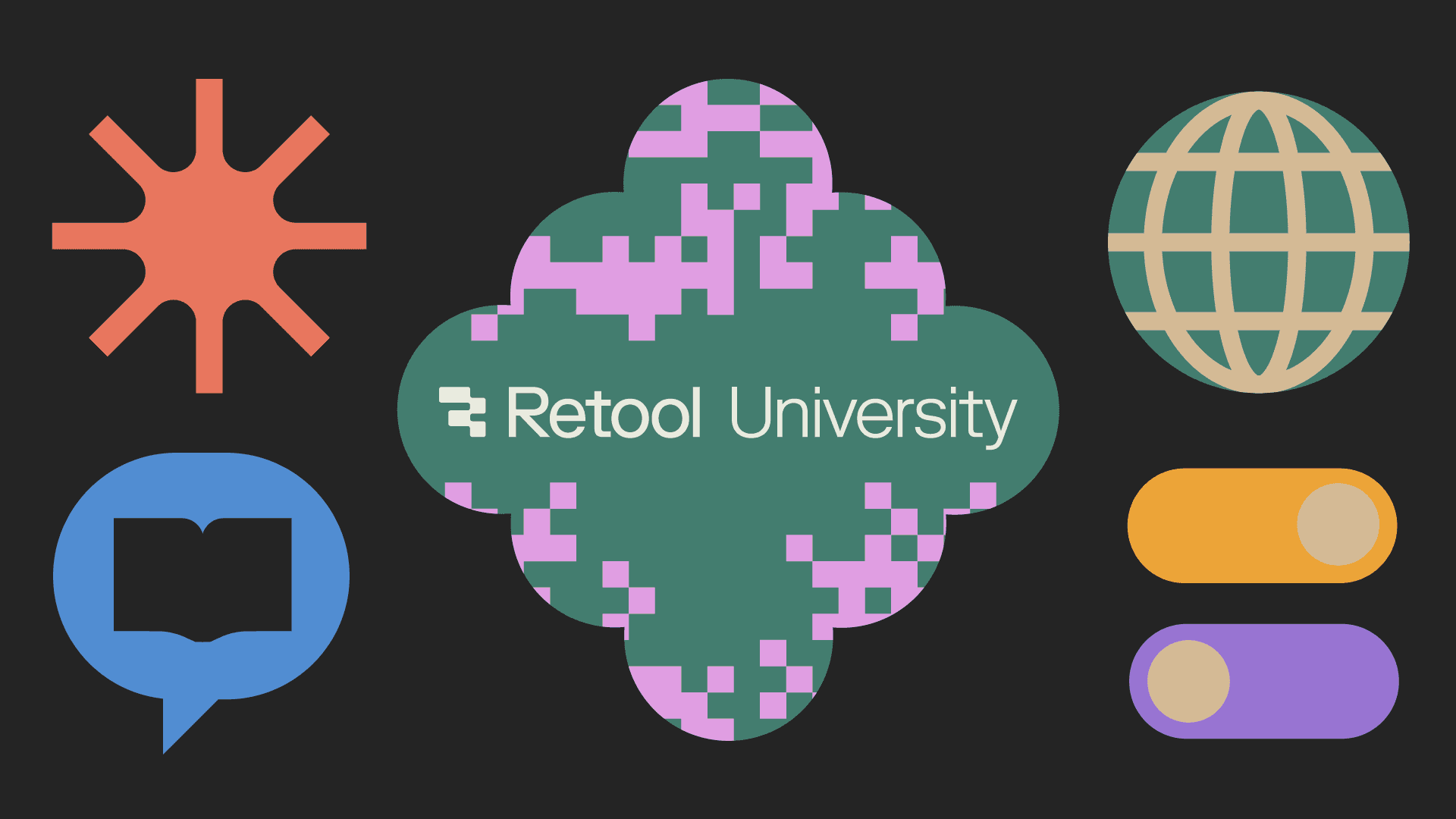When we first started talking about launching a University, we narrowed in on a single goal: to help anyone become a builder in Retool. To do that, we knew we needed a specialized, self-service educational platform.
As is the case with so many of our customers, we knew it would be hard to find an out-of-the-box solution that would meet all of our requirements. So, naturally, we used every feature in our arsenal to bring a scalable, reliable solution to life.
Building good software is our mission, and there’s no better way to embody that mission than to use our own solution to create something lasting. Here’s how we did it.
Before the team could even think about building a University, I had to understand exactly who we’d be building it for. Throughout June and July of 2023, I interviewed members of our team who engage with builders and customers the most.
These (numerous) meetings and subsequent notes yielded data, anecdata, and countless in-the-trenches stories of challenges our users faced. Collating all of this context helped us better understand who was using Retool and who could benefit from continuing education. Developers were a natural choice, but we also identified builders in developer-adjacent roles, such as PMs and founders, as well as admins and architects.
In our research, we learned that builders come to the Retool platform with varying degrees of experience and desired learning outcomes. We knew then we needed a way to combine self-guided learning pathways with more a-la-carte education options to truly build a space with something for everyone.
From there, it was a matter of deciding the most efficient way to build our ideal University. Our path forward was clear: we could use tooling that we already had to integrate external learning portals to create a smooth and customized learning experience—and avoid building from scratch in the process.
In my early interviews with my team in 2023, it became clear that we first needed to provide educational support for Retool partners who were already highly engaged in the platform. That summer, we investigated what we would use to upskill partner organizations and we established a defined Partner Portal. Retool felt like the obvious choice for a portal like this, but for course delivery, we chose to use Workramp Academies as our learning management system (LMS), Docusarus for labs and examples, and Credly’s digital badging API for course completion milestones. We found these tools allowed partners more pathways to self-service their education, but we still used Retool to combine these different pieces into a scalable and cohesive partner experience.
The Partner Portal’s architecture focused on:
- Managing users and permission groups using our platform.
- Providing access to courses and labs via Workramp and Docusaurus.
- Tracking active students and their progress using tables.
- Establishing integrations with Workramp LMS Webhooks, Credly digital badging API, and Slack channels.

We launched the Partner Portal in September 2023 with two courses: Retool Platform Fundamentals and Retool Platform Developer. Then, we watched as more than 100 partners upskilled and delivered better apps to their customers.
Once we had partners learning in Partner Portal, we validated our hypothesis that we could use Retool as an education platform powered by Workramp, Credly, and our own features like Workflows. The next phase focused on expanding that education experience to anyone building in Retool. Feedback from partners allowed us to hone in on creating more advanced courses, video content, and building best practices.
We constructed an education portal using Partner Portal as a baseline. Initially, Retool technical account managers (TAM) would invite a few customers at a time into an early version of Retool University. This invite-only process allowed us to gather customer feedback and identify friction points in the self-service signup process. After testing from March through July of 2024 we came to a few important conclusions based on this small group’s feedback:
- Education should be available to all Retool builders.
- Builders should be able to register and engage with the platform without requiring assistance from us.
- An education platform should include more diverse and advanced learning content.
- A multiapp solution would need improvements to performance and simplify the development experience.

In July 2024, we began implementing improvements and automations to architect Retool University’s education portal. Here’s what we used to establish an integrated architecture where Retool is the backbone and the other applications provide supporting features and functionality.
The first change to the original partner portal construct was the creation of public apps to support login, sign-up, and reset password functionality. For that, we use our external apps and email functionality to enable a self-service invite process. Our solution provides a configurable access experience and easily integrates with user events such as logins, password resets, invitation claims, and more.
When a user logs into Retool University, they’re placed into a permission group allowing them into the platform’s multipage application. Each selection in the navigation bar represents a different page—Overview, Courses, and Labs.

To align the colors, fonts, and styling with our updated brand, we used the Retool Theme Editor and Retool Theme Generator, where we imported the color palettes and fonts we wanted.

This helped us easily define a University theme that we then applied within the app’s settings.
Managing both object and data storage was critical within the Retool U multipage app and Workflows. We used Retool Storage for videos and thumbnails and an Amazon RDS Postgres instance for course, badge, and student data.

While Retool Apps provides the interface for users, backend workflows are an equally important behind-the-scenes part of the University experience. Retool Workflows integrate user events (login, sign-up, claim invitation, reset password), Workramp LMS APIs/Webhooks (authentication, course completion, course catalog, student analytics), digital badge creation using Credly APIs, Slack channel messaging, and automated invites to customers via Salesforce.

Zooming out, you can see how we used our platform to build the foundation for the set of integrated pieces that make up the Retool U solution.

We built Retool University because we wanted to create a space for all builders to hone their skills with relevant coursework and highly contextual, self-service experiences. What started as a portal for our partners evolved into an integrated educational platform built with the tools we already have. You can start your learning journey by creating a free Retool U account.
This wouldn’t have been possible without thoughtful feedback from our partners and builders. Once you’ve had a chance to explore Retool U, we’d love to hear what you think.

Another special thank you to Alex Tapper and Brianna Krieg for framing some of the core integrations for Partner Portal and their continued support, and to Nerissa Lin for assistance with DB migration. I also would like to thank Justin Pervorse, Willa Gross, J.D. Reeves, and Kent Walters for design support with the rebranding effort.
Reader



